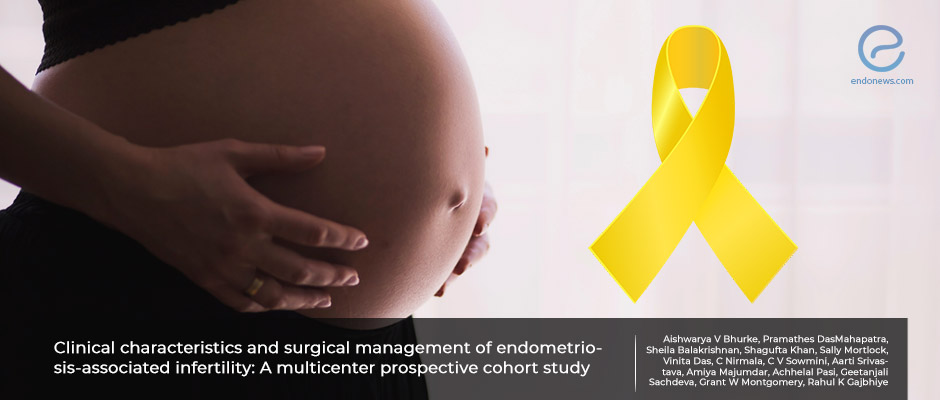How Likely Am I to Conceive After Endometriosis Surgery?
Feb 9, 2022
It all depends on the type of endometriosis lesion, study says.
Key Points
Highlights:
- Women with superficial peritoneal endometriosis and one type of endometriotic lesion, are more likely to conceive following surgery.
Importance:
- The conception rate after endometriosis surgery in infertile women is related to clinical-surgical characteristics and the type of endometriosis.
What's done here:
- Researchers from India conducted a prospective, multicenter, cohort study in 204 women with endometriosis.
- Around 40% of patients had deep endometriosis; more than 30% had endometrioma and 29% had superficial endometriosis.
- Patients with single type lesions were common (more than 45%), two lesion types were >37% and three lesion types were 16%.
Key results:
- Women with only one type of endometriotic lesion were more likely to conceive after surgery.
- Women with superficial peritoneal endometriosis were more likely to conceive after surgery.
Limitations:
- The sample size was small and within a specific age group. This could lead to possible bias for the management of endometriosis-related infertility in older women.
- Follow-up was only carried out for a short time and by telephone.
Lay Summary
Women with superficial peritoneal endometriosis and just one type of lesion are more likely to conceive after surgery, according to a new study published in the International Journal of Gynecology and Obstetrics.
This is important because patients will be better informed and will have a clearer idea of what they can expect following surgery in terms of fertility.
In order to characterize the relationship between the type of endometriosis lesion and the rate of conception following surgery in infertile women with endometriosis, a team of researchers led by Dr. Rahul K Gajbhiye from the National Institute for Research in Reproductive Health, in Mumbai, India conducted a prospective, multicenter, cohort study on 204 women with endometriosis, ages 20 to 35.
Among the women, the most common type of lesion was deep infiltrating endometriosis that affected around 40 percent of patients. This was followed by endometrioma affecting 30 percent of women and superficial peritoneal endometriosis affecting 29 percent of women. Almost half of the patients (46.1%) had a single lesion type while 37.7% had two and 16.2% had three lesion types. There were significant differences between regions.
When the researchers analyzed the type of endometriosis women had in terms of body weight, they found that 40% of women who were obese had superficial peritoneal endometriosis while 78% of women who were underweight had deep infiltrating endometriosis.
The researchers also reported that there were significant differences in mean endometriosis fertility index scores between the types of endometriosis lesion and patients with one, two, or three types of endometriosis lesions.
More than two-thirds of women conceived naturally after their operation. In terms of the number of lesion types, half of those with a single type of lesion conceived after surgery, the majority had superficial peritoneal endometriosis, 12.5% had endometrioma and 6.3% had deep infiltrating endometriosis.
“Women with "superficial peritoneal endometriosis" and only one type of endometriotic lesion were more likely to conceive post-surgery,” the authors concluded. “Our data (…) suggest that more emphasis should be given on infertility counselling pre- and post-surgery and especially in primary care”.
Research Source: https://pubmed.ncbi.nlm.nih.gov/35075631/
infertility superficial peritoneal endometriosis endometriosis surgery deep infiltrating endometriosis endometrioma

